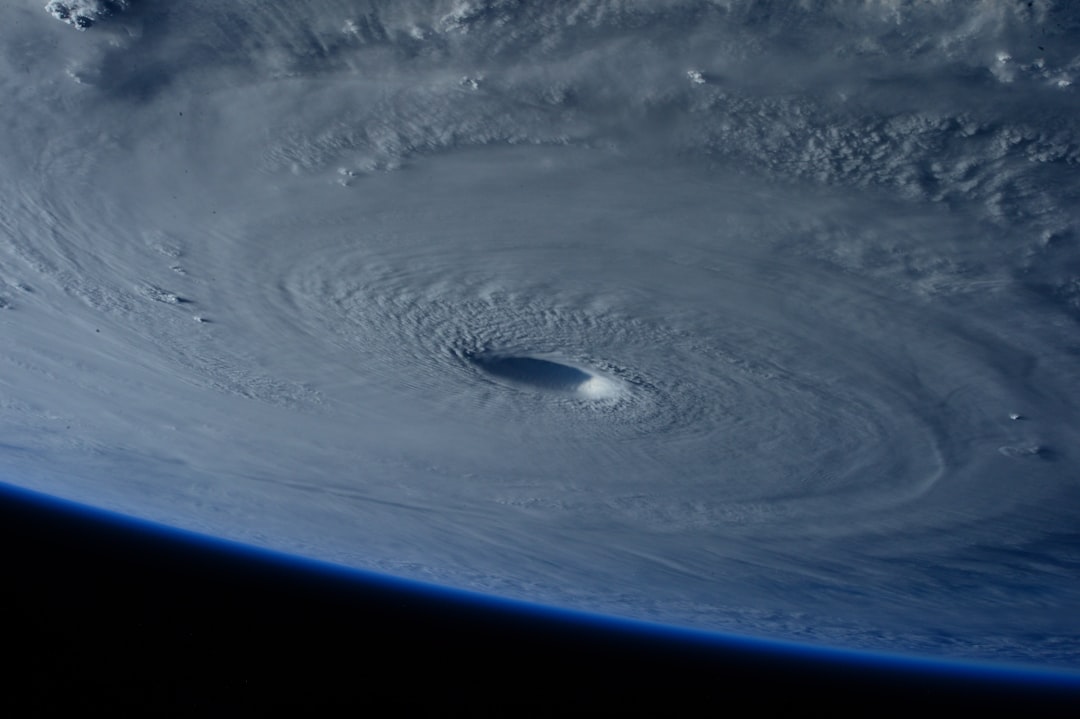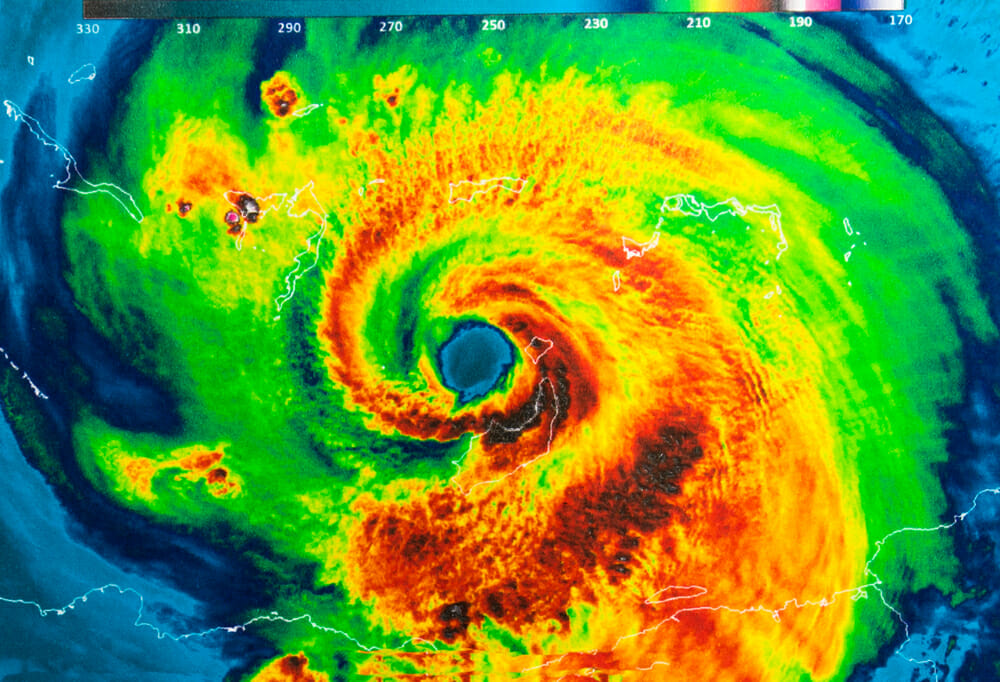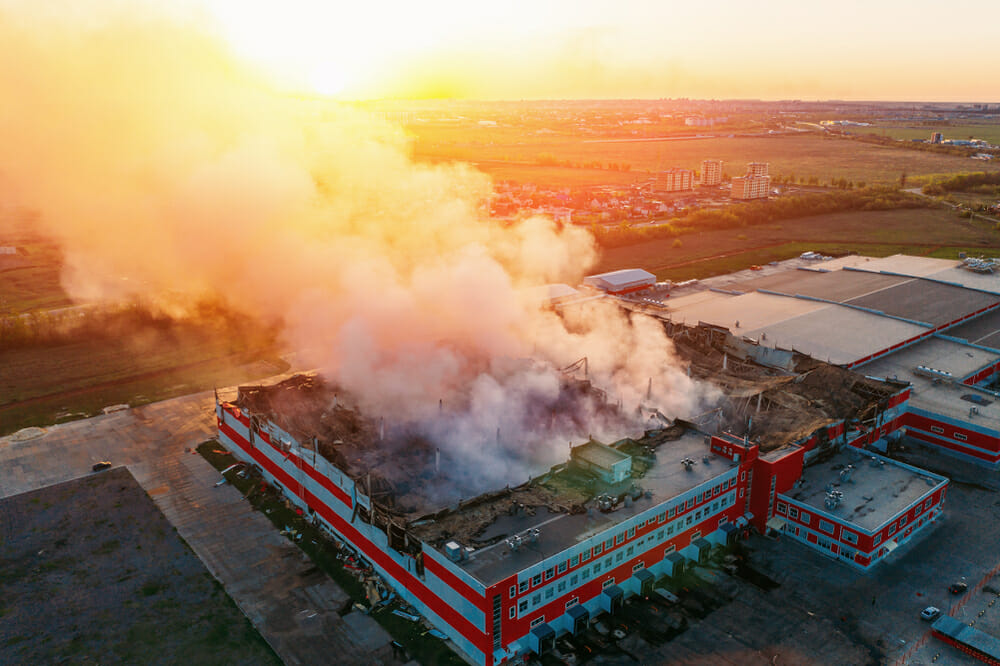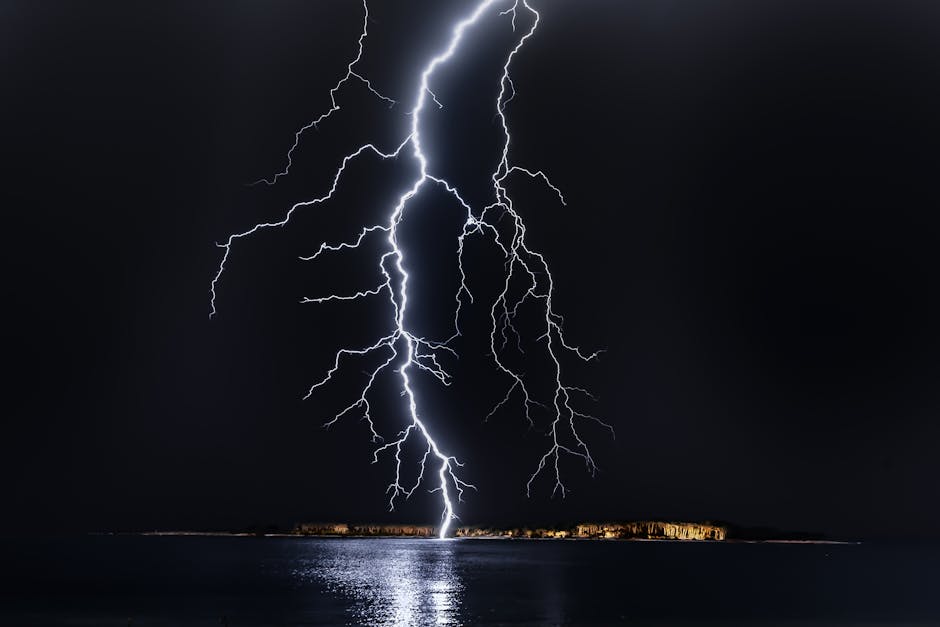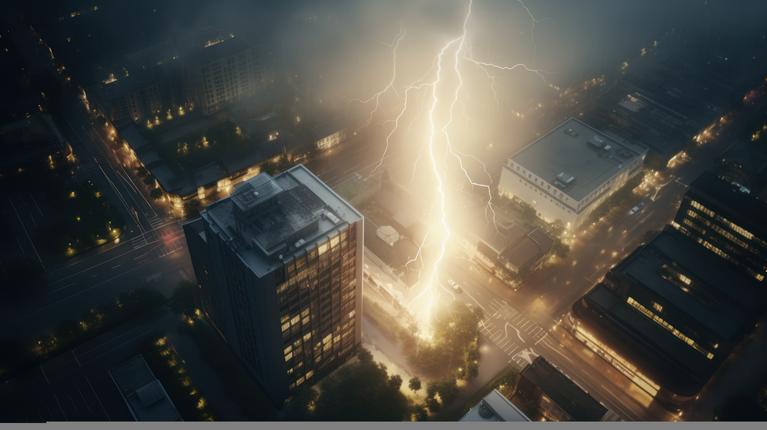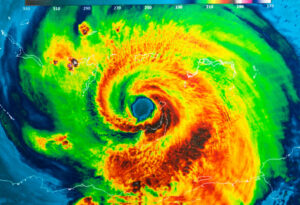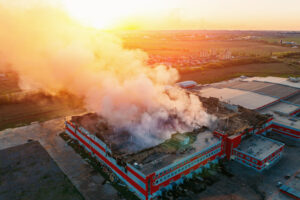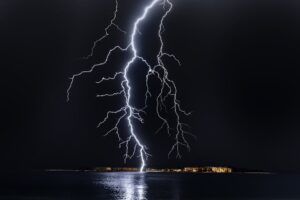Introduction
What is a hurricane? At its core, a hurricane is a massive, swirling storm system characterized by a low-pressure center, high winds, and heavy rain. Originating over warm ocean waters, these powerful weather events are also known as tropical cyclones or typhoons in different parts of the world. They are driven by heat released from the condensation of moisture in the air, fueled by the warm ocean below.
Hurricanes are structured in three main parts: the eye, the calm center; the eyewall, where the most severe weather occurs; and the outer rain bands, which can stretch for hundreds of miles. These storms can cause extensive damage due to high winds, heavy rainfall, storm surges, and flooding, particularly when they make landfall.

Understanding hurricanes is crucial, especially for those managing or owning properties susceptible to these natural disasters. Knowing their nature, and potential impacts can help in preparing and potentially mitigating the risks associated with hurricanes.
What is a Hurricane?
What is a hurricane? Simply put, a hurricane is a type of tropical cyclone. It’s a massive rotating storm system that forms over warm ocean waters and features high-velocity winds. Let’s break down this definition to understand what each part means:
Tropical Cyclone
A hurricane is a type of tropical cyclone, which is a general term for a weather system over tropical waters with organized thunderstorms but no fronts (a boundary separating two masses of air of different densities). Tropical cyclones include tropical depressions, tropical storms, and hurricanes, depending on their strength.
Warm-Cored Storms
Hurricanes are “warm-cored” storms, which means they are fueled by the release of heat when moist air rises and condenses. This is different from “cold-cored” systems like most winter storms and low-pressure systems in higher latitudes, which are powered by temperature contrasts in the atmosphere.
Rotating System
The rotation in hurricanes is due to the Coriolis effect, which is caused by the Earth’s rotation. This effect causes the path of fluids like air and water to curve; thus, the winds in a hurricane rotate around a central point (the eye). In the Northern Hemisphere, this rotation is counter-clockwise, and in the Southern Hemisphere, it’s clockwise.
High-Velocity Winds
Hurricanes have high-velocity winds that begin at 74 miles per hour (119 kilometers per hour). These winds can cause devastating damage to structures, uproot trees, and create storm surges along coasts.
Understanding these components helps us grasp why hurricanes are among the most powerful and destructive weather events on Earth. Their ability to release vast amounts of energy makes them significant meteorological phenomena, capable of causing extensive damage to coastal and inland areas. As we continue to explore hurricanes, we’ll delve into their formation, structure, and the impacts they can have on our environment and societies.
How Do Hurricanes Form?
What is a hurricane? It’s a complex and powerful storm, and understanding its formation involves several key ingredients and processes. Let’s break down how these elements come together to create a hurricane.
Warm Ocean Waters
Hurricanes begin over warm ocean waters, especially those with temperatures above 26 degrees Celsius (79 degrees Fahrenheit). This heat acts as the fuel for the hurricane, providing the energy needed for the storm to develop and intensify. The tropical regions of the Atlantic and the East Pacific are typical breeding grounds due to their warm sea temperatures.
Thunderstorms and Tropical Waves
A hurricane often starts as a group of thunderstorms moving across the ocean. These thunderstorms can cluster around a tropical wave—a low-pressure area that moves through the atmosphere’s moisture. In the Atlantic, these waves frequently originate off the coast of Africa, while in the Pacific, they may develop from a monsoonal trough.
Coriolis Force
The Coriolis force, due to the Earth’s rotation, is vital for the spinning motion of hurricanes. This force is weaker at the equator and stronger towards the poles. Hurricanes need this spinning motion to form, which is why they do not develop too close to the equator—typically forming at least 5 degrees latitude away.
Saturated Lapse Rate
For a hurricane to maintain its strength, the air around its center must be unstable enough to keep rising. The saturated lapse rate ensures that the warm air near the surface rises quickly, cooling off and releasing heat as it moves upward. This release of heat warms the core of the hurricane, helping to drive its engine.
Low Vertical Wind Shear
Wind shear refers to the change in wind speed or direction with height in the atmosphere. Low wind shear is crucial for hurricane formation. High wind shear can tear the storm apart, dispersing its heat and moisture, which disrupts the storm’s structure and can prevent it from forming or strengthening.
High Humidity
High levels of humidity from the ocean’s surface up to the mid-levels of the atmosphere help fuel the storm. Moist air leads to the formation of clouds and rain, which are essential for the storm’s development. Dry air, on the other hand, can weaken a storm by promoting cooling through evaporation.
The Role of Tropical Waves and Monsoonal Troughs
As mentioned, tropical waves are essential in the formation of hurricanes in the Atlantic. These waves provide a mechanism for organizing the thunderstorms and moisture into a coherent system. In the Pacific, hurricanes can also form from monsoonal troughs, which are elongated areas of low atmospheric pressure that produce similar conditions for hurricane development.
By understanding these factors, we can see how delicate and interconnected the process of hurricane formation is. Each element plays a critical role in creating and sustaining these mighty storms. We’ll explore the structure of hurricanes and the impacts they can have on our environment and communities.
The Anatomy of a Hurricane
When discussing what is a hurricane, understand its structure. A hurricane is composed of several key parts: the eye, the eyewall, and the rain bands. Each plays a crucial role in the storm’s behavior and intensity.
Eye
The eye of a hurricane is the center and is surprisingly calm compared to the surrounding areas. Skies can be partly cloudy, and sometimes even clear. Winds are light, which can be a deceptive break from the storm’s destructive power surrounding it.
Eyewall
Surrounding the eye is the eyewall, which features the hurricane’s strongest winds and heaviest rains. This area is a ring of thunderstorms that whirl around the eye. The dynamics within the eyewall can significantly influence the overall strength of the hurricane.
Rain Bands
Extending from the center are the rain bands. These bands can stretch out hundreds of miles from the hurricane’s center. They consist of clouds and showers that spiral outwards, containing thunderstorms and sometimes even tornadoes. The intensity and reach of these rain bands can affect how far-reaching a hurricane’s impacts are.
Saffir-Simpson Hurricane Wind Scale
To classify the strength of hurricanes, meteorologists use the Saffir-Simpson Hurricane Wind Scale. This scale categorizes hurricanes from 1 to 5 based on their sustained wind speed:
- Category 1: Winds 74-95 mph – very dangerous winds will produce some damage.
- Category 2: Winds 96-110 mph – extremely dangerous winds will cause extensive damage.
- Category 3: Winds 111-129 mph – devastating damage will occur (considered a major hurricane).
- Category 4: Winds 130-156 mph – catastrophic damage will occur.
- Category 5: Winds greater than 157 mph – catastrophic damage will occur, and most of the area will be uninhabitable.
Category Classification
The category of a hurricane is a quick way to understand its potential for damage and flooding. Higher category numbers indicate stronger winds and greater potential for destruction. For example, a Category 5 hurricane has wind speeds over 157 mph and can cause catastrophic damage, making areas hit by such a storm potentially uninhabitable for weeks or months.
Understanding the anatomy of a hurricane helps us grasp why these natural phenomena are both fascinating and fearsome. Their structure dictates not only their strength but also the breadth of their impact, affecting everything from weather patterns to human safety. We’ll examine how hurricanes impact the areas they hit and what measures can be taken to mitigate these effects.
The Impact of Hurricanes
Hurricanes are not just powerful; they are transformative, often reshaping the landscapes and lives they touch. Here, we delve into the various effects hurricanes can have, from storm surges to property damage, particularly in coastal areas.
Storm Surge: The Greatest Threat
Storm surge is often the deadliest part of a hurricane. It occurs when winds push ocean water toward the shore, which can lead to rapid flooding in coastal areas. In many cases, the surge can reach heights of over 10 feet, overwhelming barriers and flooding homes and businesses. Historically, storm surges have caused about half of all U.S. hurricane-related fatalities.
Heavy Rainfall and Inland Flooding
Hurricanes can dump inches to feet of rain over large areas, leading to significant inland flooding. This type of flooding can devastate communities far from the coastline, destroying crops, eroding soil, and collapsing homes and infrastructure.
Tornadoes: A Spiraling Hazard
The intense winds and unstable atmospheric conditions in and around hurricanes also foster the development of tornadoes. These tornadoes typically occur in the outer bands of hurricanes and can extend the zone of destruction well beyond the immediate path of the storm itself.
Rip Currents: Hidden Dangers
Even when a hurricane is hundreds of miles offshore, it can generate dangerous rip currents that pose serious risks to swimmers and beachgoers. These powerful currents can quickly pull even the strongest swimmers out to sea.
Property Damage: A Widespread Issue
From shattered windows and torn roofs to complete structural failures, the property damage caused by hurricanes can be extensive. Coastal areas often bear the brunt of this damage due to their proximity to the storm’s landfall, but the effects can also penetrate far inland, exacerbated by flooding and tornadoes.
Coastal Areas: Bearing the Brunt
Coastal areas are particularly vulnerable to hurricanes. The combination of storm surge, high winds, and heavy rains can lead to catastrophic outcomes, eroding beaches, destroying marine habitats, and displacing communities.
Understanding these impacts is crucial for preparation and recovery efforts. We’ll explore how individuals and communities can prepare for the inevitable arrival of these formidable storms, highlighting the resources and strategies that can mitigate their devastating effects.
Preparing for a Hurricane
Know Your Resources: NOAA and the National Hurricane Center
When a hurricane threatens, knowledge is your first line of defense. The National Oceanic and Atmospheric Administration (NOAA) and the National Hurricane Center (NHC) are key resources. They provide up-to-the-minute weather updates and forecasts during hurricane season, which runs from June to November.
- NOAA offers a wide array of information, including satellite imagery and sea conditions.
- NHC focuses on predicting the paths and impacts of tropical storms and hurricanes.
Essential Safety Tips
Preparation can significantly reduce the risks associated with hurricanes. Here are some basic safety tips every household should follow:
- Stay Informed: Regularly check updates from NOAA and local weather channels.
- Secure Your Home: Reinforce roofs, windows, and doors. Remove or secure loose items from your yard.
- Know Your Evacuation Zone: Understand if your area is prone to flooding or storm surges.
Building an Emergency Kit
An emergency kit is crucial and should include:
- Water and Non-perishable Food: At least a three-day supply per person.
- First-Aid Kit: Stocked with essential medicines and supplies.
- Flashlights and Batteries: Power outages are common during hurricanes.
- Important Documents: Keep copies of important documents in a waterproof container.
Developing an Evacuation Plan
An effective evacuation plan ensures that you and your family know what to do when a hurricane warning is issued:
- Plan Routes: Identify multiple evacuation routes in case some roads are blocked or flooded.
- Communication Plan: Establish how you will contact family members if separated.
- Practice Drills: Regularly practicing your evacuation plan can make the actual evacuation smoother and less stressful.
How Insurance Claim Recovery Support Can Help
During and after a hurricane, dealing with property damage can be overwhelming. Insurance Claim Recovery Support helps you navigate the complexities of filing and settling claims. They advocate on your behalf to ensure you receive the compensation you deserve for damages. Their expertise can be invaluable in helping you recover from the hurricane’s impact.
By embracing these preparation strategies, including leveraging resources like NOAA, the National Hurricane Center, and professional services like Insurance Claim Recovery Support, you can enhance your readiness for hurricanes and safeguard your property and loved ones. As we continue to face these natural challenges, being prepared is not just advisable; it’s essential.
Conclusion
As we’ve explored the formidable nature of hurricanes and their impacts, it’s clear that understanding and preparing for these powerful storms is crucial. At Insurance Claim Recovery Support LLC, we stand as a steadfast ally for policyholders facing the daunting task of property damage claims. Our commitment to advocacy ensures that you are not alone in navigating the complexities of insurance processes, especially in the aftermath of a hurricane.
Advocacy for Policyholders
Our team is dedicated to advocating for your rights as a policyholder. We understand the stress and confusion that can arise when dealing with insurance claims after a hurricane. That’s why we work tirelessly to ensure that you receive fair treatment and the maximum compensation possible. Our experts handle the intricate details of the claim process, allowing you to focus on recovery and rebuilding.
Property Damage Claims
Hurricanes can cause extensive property damage, from structural impacts due to wind and water to losses due to power outages and more. Filing property damage claims can be overwhelming, but our experienced adjusters are here to guide you every step of the way. We assess the damage thoroughly, document it accurately, and negotiate with insurance companies to cover all eligible losses.
Serving Texas Cities
Our services span across Texas, a state all too familiar with the ravages of hurricanes. From Austin to Houston and Dallas to San Antonio, we’ve helped countless homeowners and businesses recover from storms like Hurricane Harvey and Hurricane Laura. Each city in Texas has its unique challenges, and we tailor our strategies to meet these specific needs, ensuring comprehensive support for all our clients.
Navigating the Insurance Claim Process
The insurance claim process can be intricate and fraught with challenges. Our experts at Insurance Claim Recovery Support LLC specialize in demystifying this process for you. We keep you informed at every turn, providing clarity and transparency. With our advocacy, you’re equipped to make informed decisions and achieve favorable outcomes in your claims.
In conclusion, hurricanes are a formidable force of nature that requires significant preparation and understanding. By partnering with Insurance Claim Recovery Support, you ensure that you have knowledgeable and committed advocates on your side. We help you navigate the aftermath of a hurricane, transforming the complex claims process into a manageable journey towards recovery. When it comes to hurricane damage, your best defense is a good offense—armed with the right support and information.

